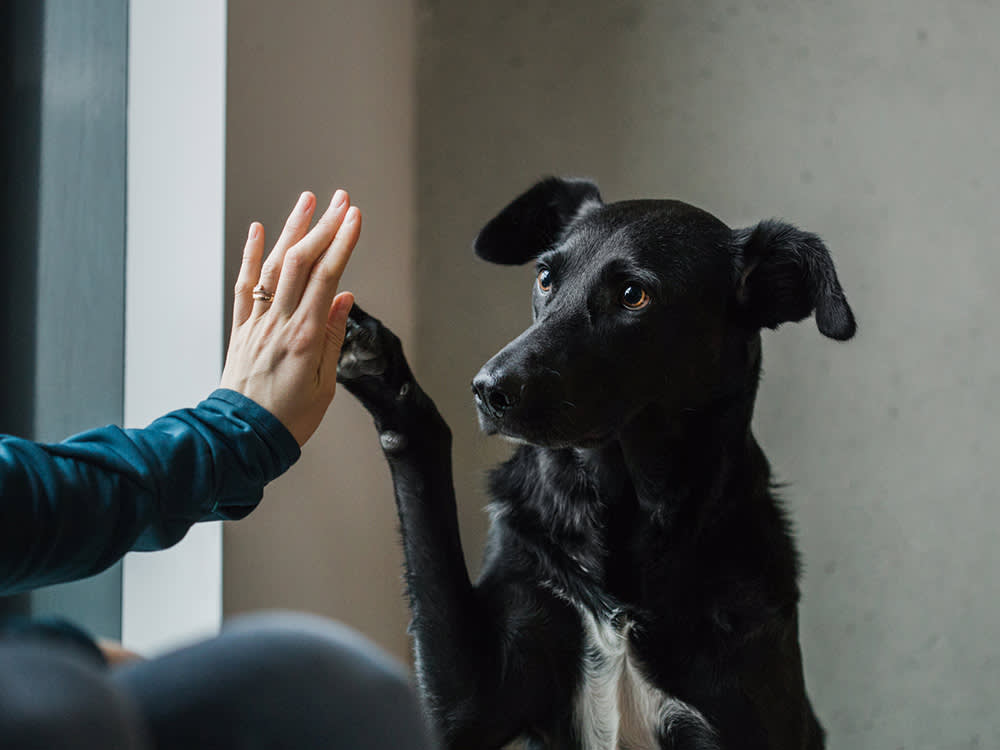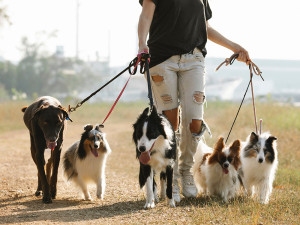15 Amazing Facts About Dogs You Might Not Know
Boost your dog smarts with these cool facts.
How much do you really know about dogs? From fastest dog to poop alignment, the fact is dogs have some incredible abilities. But did you know that they can even smell the passage of time? Yep, it’s true. Here are 15 incredible dog facts that you probably don’t know.
1. They have an incredibly fast sniff rate.
A dog breathes in and out around 15 times per minute when sitting calmly, compared to a typical human who breathes out 12 to 20 breaths per minute. A dog's breathing frequency goes up to 31 times per minute while walking. But when a dog is actively sniffing, the inhalation/exhalation rate goes up to 140 to 200 times per minute.
Trick question: All dogs are perfect! But find out which type is the best fit for you.
2. Dogs communicate with more than vocals.
Dogs do communicate with each other when they vocalize, bark or growl. But a more common means of communication between dogs is body language — an upright or tucked tail, forward ears, or tense body can speak volumes.
3. Petting sessions relax shelter dogs.
Researchers have confirmed that a quiet, 15-minute petting session can relax a shelter dog and result in positive behavioral and physiological changes.
How much do you spend on your pet per year?
4. Humping is more common among males.
Studies from dog parks recorded that humping, or more politely, mounting was 16 times more frequent in male-male pairs as compared to female pairs.
5. How a dog greets varies by sex.
Female dogs are more likely to greet other dogs by smelling the snout/muzzle first, while males go for the anogenital region. (You might be able to sex the dogs who greet your dog based on this behavior alone.)
6. Paw preference may correlate to personality.
Another cool fact about dogs relates to their paw preference. Dogs who show paw preference and those who are reported to be right-pawed are associated with lower arousal and calmer responses to novel stimuli and strangers.
7. Female dogs are better smellers.
Is it true female dogs are better at smelling than males? The experts who wrote K9 Scent Training observed that to be the case, and Alexander Horowitz added that women are often keener “smellers” than men.
8. Dogs are individuals.
Not all Retrievers like to play fetch or Pointers point at things. In fact, the seminal research, Genetics and the Social Behavior of the Dog, states that there is often greater variability between dogs within the same breed than between breeds in temperament and talent .
9. Dogs are way better smellers than us.
Dogs have 125 to 300 million olfactory cells (compared to our 5 million), and 33% of their brain is dedicated to interpreting odors. Frank Rosell, scientist and author of Secrets of the Snout, estimates that a dog’s nose is between 100,000 and 100 million times more sensitive than a human’s.
10. Gazing is good for both of us.
A dog gazing into our eyes, and us looking into theirs, showed a marked increase in oxytocin (the “love” hormone) levels in both humans and dogs. This is similar to mother-infant relationships.
11. Dogs come in vastly different sizes.
The tallest dog on record is a Great Dane who stood 44 inchesopens in new tab tall, and the shortest dog was a Chihuahua, measuring just 3.8 inches in height.
12. Dogs can smell the passage of time.
According to researcher and author Alexandra Horowitz, “Dogs smell time.” Because of their extremely sensitive noses, dogs can smell the way odors change over time. They smell time as a complex layer of both new (stronger) and old (weaker) smells.
13. Dogs aren’t as fast as cats (sort of).
The cheetah, the world’s fastest land animal and a large cat of the subfamily Felinae, can race up to 75 mph for short bursts. The Greyhound is the fastest canidopens in new tab, with a peak speed of about 45 mph.
14. Dogs can sense the earth’s magnetic field.
When your dog is carefully choosing the perfect place to do his business, it is because they prefer to go poop in alignment with the Earth’s magnetic field.
15. The Origin of The Dog Days of Summer
Considered to be the hot, lethargic days of late July and early August. Ancient Greek and Roman astrology observed this periodopens in new tab to coincide with the appearance of the star system Sirius — the Dog Star.













